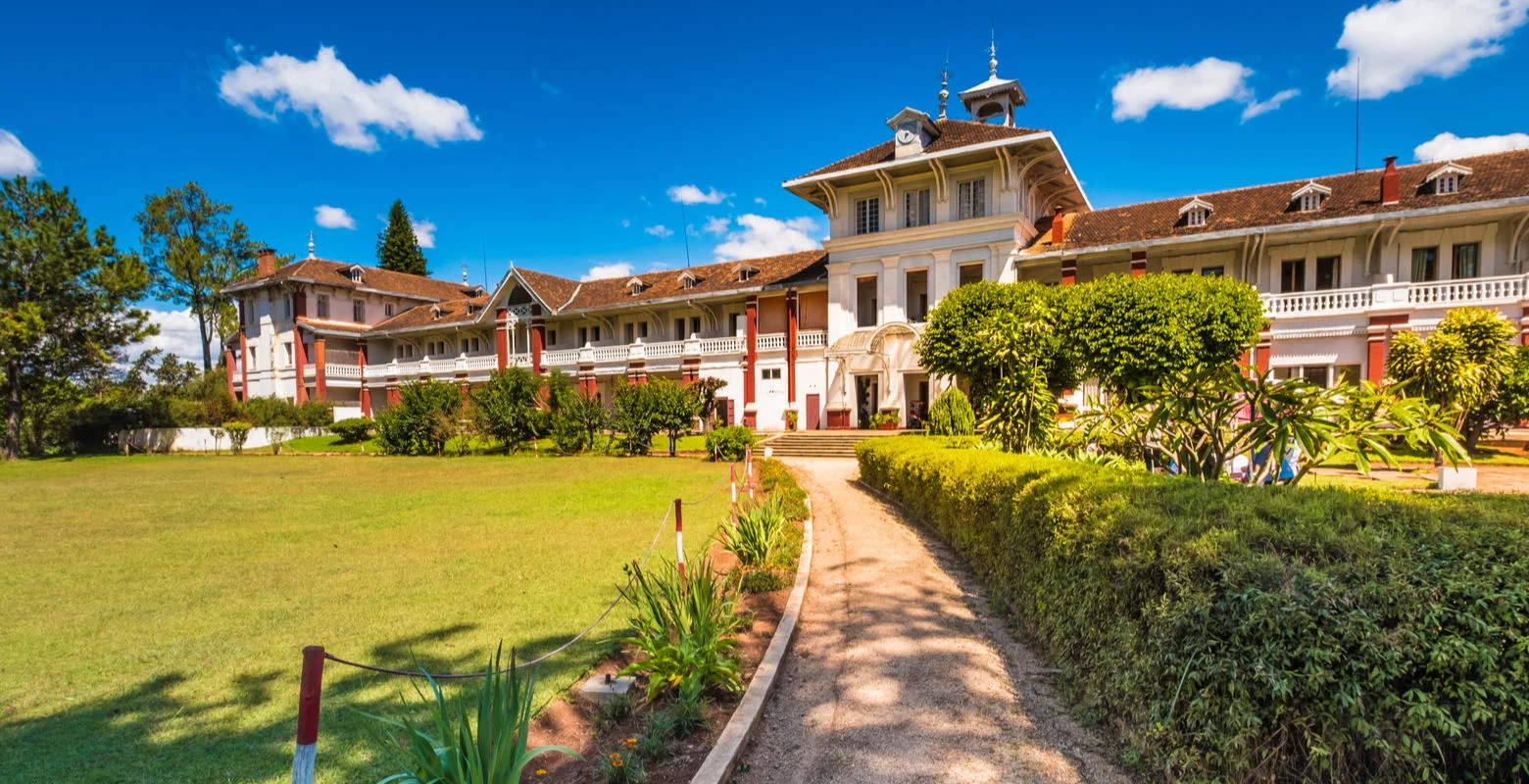Overview
Madagascar is an island country that is located 250 miles off mainland Africa’s east coast.
It is set in the Indian Ocean and boasts of flora and fauna so diverse, they are found nowhere else on Earth. These include the Aye-aye, the pot-bellied Baobab tree, the Giraffe weevil, the Darwin’s orchid, the Fossa as well as the Bismarck palm, among others.
With an overall population of 27,691,018 as of 2020, Madagascar has an established agricultural industry thanks to its diverse climate and fertile soil. Apart from being a consistent producer of staple crops like maize, cassava and rice, it is also becoming one of the world’s top exporters of high-quality cacao beans and vanilla.
While agriculture comprises the bulk of Madagascar’s economy, it is nowadays considered as a rising star in tourism for its hidden holiday destinations and vacation spots such as the Tsingy de Bemaraha, the Ile Sainte Marie, the Andringitra National Park, the Les Trois Baies and many more.
What most people don’t know is that the history of Madagascar is as colorful and fascinating as its abundance of extraordinary plants, animals and places. Read on to find out more.
It was once uninhabited
Based on archaeological findings, Madagascar was uninhabited up until 700 CE when people of Western Malayo-Polynesian origin sailed from Southeast Asia on canoes and founded a settlement on the island.
Experts suggest that this is the reason why although Madagascar is only a few hundred miles away from mainland Africa, the local Malagasy language is filled with grammatical modifiers and phonetic elements akin to the languages spoken in Southeast Asia, particularly by the people of Palau, Sulawesi, Sumatra and Borneo.
Given the island’s richness in natural resources, the settlement grew over time and its inhabitants intermarried with mainland Africans who arrived sometime later. They also began trading with seafarers on passing ships, which mostly came from the Middle East, in about 800 AD.
Moreover, local folk history relates that Madagascar once even became a stopover for traders and pirates alike looking to resupply on food and water as the years went by.
There are also claims that it used to be the favorite port of call of Scottish sailor turned pirate Captain William Kidd for the island’s bountiful variety of provisions.
The arrival of Europeans
The island that became the modern Madagascar remained generally unnoticed by European colonizers until it was spotted by a Portuguese ship on its way to India in the 1500’s.
It is said that the first European to step on the island was Diogo Soares, a Portuguese navigator, who had a quick stopover on its shores in 1543 to stock up on supplies. Interestingly, some sources also say that strong winds blew Soares’s ship off its course and forced him to inadvertently dock on the island.
Whether Soares really intended to come to Madagascar or not, he is believed to be the namesake of the city of Diego Suarez, also known as Antsiranana, which is the capital of the Diana Region.
News of the island’s existence soon spread and it didn’t take long before Portuguese missionaries looking to bring Christianity to its inhabitants arrived in the early 1600’s. French and British colonizers aiming to establish their own settlements in the area also followed suit.
The Sakalava and Merina Kingdoms
Before France achieved full control of Madagascar in 1867, the island country was governed by tribal rulers in the 17th to the early 18th century.
The Sakalava dynasty dominated the forests of the northern and western regions, while the Merina family had its seat of power in the rice fields of the central plateaus.
The reign of King Radama I
When the patriarch of the Merina clan, Andrianampoinimerina, became old and sickly, he passed on his kingship to his son, Radama I, who was said to be just eighteen years old.
According to local oral history, Andrianampoinimerina’s last wish to Radama I before his death in 1810 was that he wanted their rice fields to extend right to the shores of the sea.
The new king feared that the Sakalavas would see his youth and inexperience as an opportunity to launch an attack against his people, so he made a pact with the British settlers that he would allow them to preach Christianity in the island without retaliation from the inhabitants if they would help him conquer his rivals.
With the assistance and modern firepower of the British, Radama I eventually defeated the Sakalavas and managed to extend his kingdom to most of Madagascar in less than a decade. He also married his queen, Ranavalona, during this time.
When Radama I was already ruling two-thirds of the island, the British met with him again. They proposed that if the king accepts a British emissary in his court and allow them to convert his people to Christianity, they will not just train and provide his army with modern firearms, but they’ll also supply his troops with a steady stream of ammunition.
Additionally, the British promised to give Radama I a yearly tribute and a printing press that can print literary materials both in Malagasy and English. This beneficial relationship between Radama I and the British went on until his death in 1828.
The changes during Queen Ranavalona’s accession to the throne
Queen Ranavalona (1828-1861) acceded to the throne when King Radama I died and she quickly issued edicts that broke off ties with the British almost immediately.
Besides ordering the stoppage of the spread of Christianity in the 1830’s, she also decreed to expel most Europeans in the island as well as imprison native converts if they will not renounce their new faith.
According to historical records, Ranavalona’s expulsion of Europeans and persecution of converts was aimed at preserving Madagascar’s independence from foreign powers. This led to numerous rebellions and wars in the island country and the fighting only came to an end when Ranavalona died in 1861.
Oddly, while Queen Ranavalona wanted the Europeans to leave the island during her reign, she and her son, the would-be Radama II, kept a close relationship with a Frenchman by the name of Jean Laborde. This later proved to be a crucial factor as regards to France’s annexing of Madagascar in 1896.
Madagascar under French rule
King Radama II had a short-lived and rather shaky reign. He was only in throne for just two years before his queen, Rasoherina, took his place.
Although there were later efforts by Rasoherina to encourage increased European presence in Madagascar and re-establish trade relations, none of them succeeded due to the turbulent political climate in the island country.
Now here’s where Jean Laborde comes in.
When King Radama II was still in power, he granted an entrepreneurial concession to a French company. This decision was mostly driven by Laborde’s influence and close relationship with the king and the late Queen Ranavalona. This paved the way to France becoming more involved in Madagascar’s trade and economy in the following years.
Given the strategic location of Madagascar, not mentioning its abundance in natural resources, France eventually became interested in annexing it.
In the 1880’s, the French government claimed the island country as its protectorate and positioned a warship and a regiment of troops in Madagascar’s northern coast to fortify its claim.
By 1890, Britain relinquished all claims to the island country and recognized it as French territory. Madagascar was formally annexed by France in 1896 with Diego Suarez serving as a base and a refueling station for the latter’s marine operations.
The Birth of the Republic of Madagascar
Madagascar went through a radical change when it was under French rule.
Besides the addition of tobacco and coffee to the list of crops cultivated in the island country, several access roads and railways were also built to support its developing agricultural trade.
However, the people of Madagascar still clamored for independence from foreign rule and rebellion broke out in 1947. It took more than a decade for the island country and its people to achieve an autonomous status.
And on June 26, 1960, Madagascar finally became an independent nation with Philibert Tsiranana (October 18 , 1912 – April 16, 1978) as its very first president. The new nation was initially called the Malagasy Republic during Tsiranana’s regime, but was later changed to the Republic of Madagascar to fully embody its vision of harmony and unification.
Emerging Dream Holiday Destination
While Madagascar is mostly renowned for its agricultural products, including its growing export trade of fine cocoa varieties like the Criollo that’s prized by gourmets around the world for its exquisite taste and distinct aroma, the island country is also welcoming more and more visitors each year for its hidden tourist destinations.
What makes Madagascar’s emerging tourism industry really awesome is it never fails to offer something extraordinary for everybody.
If you’re a beach buff whose idea of a dream vacation is to dive, windsurf, snorkel or kitesurf in pristine waters teeming with diverse marine life, there’s Tsarabanjina, Baie de Sakalava, Nosy Sakatia, Île aux Nattes, Antongil Bay, Mer d’Emeraude, Antsiranana Bay and Antsanitia Beach, just to name a few.
Or if you’re into trekking and experiencing an up close and personal encounter with stunning landscapes, plants and animals that you won’t find anywhere else on the planet.
Then there’s Parc de Tsarasaotra, the Andringitra National Park, Lake Tritriva, Ankarafantsika National Park, Pic Boby, Kirindy Mitea National Park, Mont Passot, Ranomafana National Park and the Tsingy De Bemaraha National Park, among others.
There are also loads of interesting historical landmarks, museums, art galleries and period architecture to check out like the Castle Windsor, the Royal Palace, the Musée De La Photographie De Madagascar, the Is´art Galerie, the Pirates Museum, the Musée Rabesandratana, the Andafiavaratra Palace and many more.
So if you’re still having a tricky time deciding where to spend your next holiday, Madagascar should definitely be on your checklist if you’re looking to experience something unforgettable.
Sources:
- https://www.bbc.com/news/world-africa-13861843
- https://www.infoplease.com/world/countries/madagascar
- https://www.wildmadagascar.org/kids/05-history.html
- http://www.historyworld.net/wrldhis/plaintexthistories.asp?historyid=ad26
- http://www.localhistories.org/madagascar.html
- https://www.mapquest.com/travel/interesting-facts-about-madagascar/
- https://www.kids-world-travel-guide.com/facts-about-madagascar.html
- https://www.wildjunket.com/interesting-facts-about-madagascar/
- https://www.sciencekids.co.nz/sciencefacts/countries/madagascar.html
- https://www.madamagazine.com/en/der-weg-der-schokolade-kakao-anbau/



